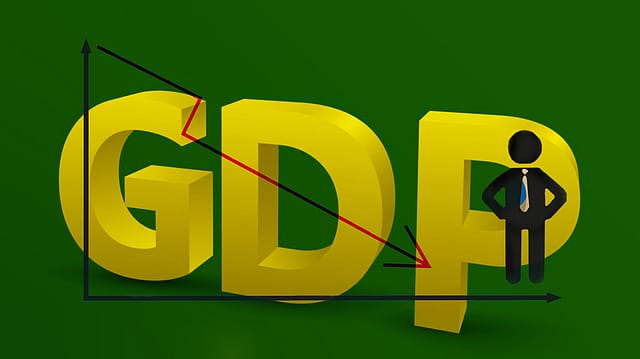US GDP contracts for 2nd straight quarter; is recession inevitable?
ADVERTISEMENT

The U.S. economy contracted for the second straight quarter, falling 0.9% at an annualised rate in the April-June period and raising fears that the world’s largest economy may be heading towards a recession. The decrease in the real gross domestic product (GDP) reflected a decline in consumer and business spending as well as federal government spending, private inventory investment, residential fixed investment, and nonresidential fixed investment.
The U.S. GDP contracted at a 0.9% annual pace in the second quarter of 2022, following a 1.6% annual drop in the March quarter, according to the "advance" estimate released by the Bureau of Economic Analysis (BEA).
“The smaller decrease reflected an upturn in exports and a smaller decrease in federal government spending that were partly offset by larger declines in private inventory investment and state and local government spending, a slowdown in personal consumption expenditures, and downturns in nonresidential fixed investment and residential fixed investment. Imports decelerated,” BEA says in a release on Thursday.
If we go by definition, a second-straight quarterly contraction in GDP would be considered a "technical recession". However, Federal Reserve Chairman Jerome Powell does not believe the U.S. economy is in a recession, defending that too many areas of the economy are performing too well. Speaking at a press conference following the Fed’s decision to raise rates by 0.75% for a second consecutive month, Powell on Wednesday said that some economic indicators are showing signs of recovery such as the labour market.
January 2026
Netflix, which has been in India for a decade, has successfully struck a balance between high-class premium content and pricing that attracts a range of customers. Find out how the U.S. streaming giant evolved in India, plus an exclusive interview with CEO Ted Sarandos. Also read about the Best Investments for 2026, and how rising growth and easing inflation will come in handy for finance minister Nirmala Sitharaman as she prepares Budget 2026.
US President Joe Biden also rejected talk of a recession, citing strong improvement in the job market, as well as an increase in consumer spending, and business investment, which was evident in the second quarter GDP figures.
The government data showed that current-dollar personal income increased $353.8 billion in the second quarter, compared with an increase of $247.2 billion in the first quarter. The rise in personal income reflects increases in compensation (led by private wages and salaries), proprietors' income (both nonfarm and farm), personal income receipts on assets, and rental income. Disposable personal income also climbed to $291.4 billion, or 6.6%, in the second quarter, in contrast to a decrease of $58.8 billion, or 1.3%, in the first quarter.
However, decline in private inventory investment, federal government spending, as well as state and local government spending remain key concerns for the economy. As per the Commerce Department report, the fall in private inventory investment was led by a decrease in retail trade (mainly general merchandise stores as well as motor vehicle dealers).
“The decrease in federal government spending reflected a decrease in nondefense spending that was partly offset by an increase in defense spending. The decrease in nondefense spending reflected the sale of crude oil from the strategic petroleum reserve, which resulted in a corresponding decrease in consumption expenditures. Because the oil sold by the government enters private inventories, there is no direct net effect on GDP,” the report notes.
The report also highlighted that the drop in state and local government spending was mainly due to a slump in investment in structures. Real disposable personal income also decreased 0.5%, compared with a sharp drop of 7.8% in the first quarter. Personal savings stood at $968.4 billion in the second quarter, compared with $1.02 trillion in the previous quarter. The personal saving rate—personal saving as a percentage of disposable personal income—was 5.2% versus 5.6% in the March quarter.
On Wednesday, the Federal Reserve hiked interest rates by 75 basis points (bps) for the second straight month, taking its benchmark rate to a range of 2.25% to 2.5%. With this, the cumulative rate increase in the last two months stood at 150 bps, which is the highest since the early 1980s. Further to the announcement, the Fed raised the target range for the federal funds rate between 3%-3.5%, while indicating that the pace of rate hike would be slower going ahead.
Economists fear that aggressive rate hike by the U.S. central bank would push the economy into recession, which is already battling with low consumer and businesses spending in the backdrop of boiling inflation, which touched a four-decade high of 9.2% in June.
